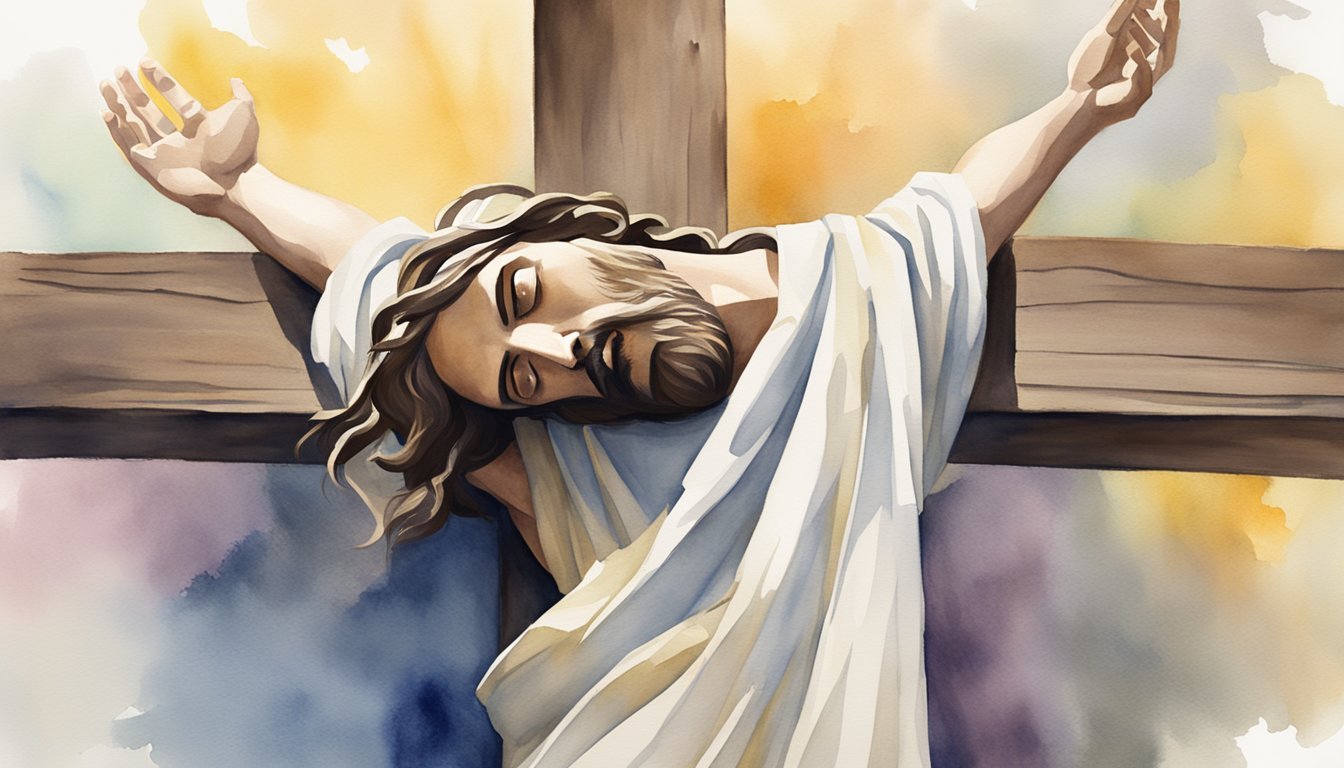Historical Context of Crucifixion
Crucifixion was a brutal method of execution practiced notably by the Roman Empire, serving both as a death penalty and a public deterrent. This section provides a concise examination of Roman crucifixion from legal practices to its most infamous instance—the crucifixion of Jesus.
Roman Practices and Legal Aspects
Crucifixion in Roman times was reserved primarily for slaves, foreigners, and those convicted of serious crimes such as insurrection. Roman law dictated that citizens, except in cases of treason, were typically exempt from this form of capital punishment. The process was executed by professional soldiers and often involved torture and humiliation. The condemned were usually scourged before being forced to carry the patibulum—the horizontal beam—to the place of execution.
The Role of Pontius Pilate and Herod
Pontius Pilate, the Roman governor of Judea, played a pivotal role in the crucifixion of Jesus, as he ultimately authorized it. Although the Gospels suggest that Pilate found no fault in Jesus, he handed Jesus over to be crucified to appease the Jewish leaders and maintain public order. Herod Antipas, the ruler of Galilee, also examined Jesus but returned him to Pilate, declining to pronounce judgment.
Significance of Golgotha and Public Execution
Golgotha, also known as Calvary, was the site outside of Jerusalem where Jesus was crucified. Crucifixions were carried out in public spaces to maximize their deterrent effect—displaying the consequences of defying Roman law. The visibility of these executions served as a grim warning against sedition and other serious offences, emphasizing the might of the Roman judicial system.
The Crucifixion According to the Gospels

The Gospel accounts offer a detailed narrative of the events leading to the crucifixion of Jesus, the method employed for his execution, and the subsequent reactions and effects that followed. These texts remain central to Christianity, shedding light on the severity of the Passion and its significance.
Events Leading to the Crucifixion
According to the Gospels, the crucifixion follows a sequence of events starting with Jesus’ arrest after the Last Supper and leading to his trial before the Jewish and Roman leaders. The Gospels of Matthew, Mark, Luke, and John describe how the title “King of the Jews” becomes a pivotal accusation against him, leading to the final judgment and death sentence. After enduring mocking and beatings during his trial, Jesus carries his cross toward the site known as Golgotha.
Details of Jesus Being Nailed to the Cross
The crucifixion process is meticulously portrayed in the Gospels, where they recount Jesus being nailed to the cross. It is described that nails were driven through his hands and feet, a method that was common in Roman executions for maximizing pain and prolongity. An inscription was placed above Jesus’ head, mocking him as “King of the Jews.” The Gospels also mention Jesus being offered wine vinegar during his crucifixion and his famous plea, “Father, forgive them, for they do not know what they are doing,” underlining his compassion even in dire suffering.
Reactions and Aftermath
The reaction to Jesus’ crucifixion was a mixture of sorrow and mockery. Women are described as mourning by the cross, while soldiers and onlookers insulted him. The Gospel narratives convey the belief that with Jesus’ death, the curtain of the Jewish Temple was torn, symbolizing the end of the old covenant and the beginning of a new one. Following Jesus’ death, Joseph of Arimathea requested his body, which was then placed in a tomb. The event of the crucifixion, particularly remembered on Good Friday, remains a cornerstone of the Christian faith and a foundation for the church’s doctrine on salvation and eternal life.

